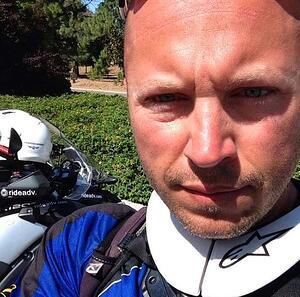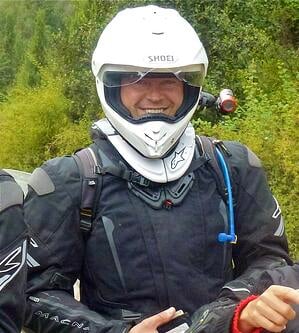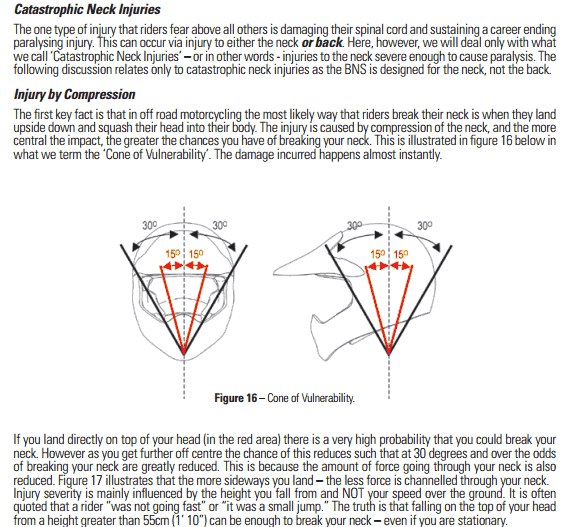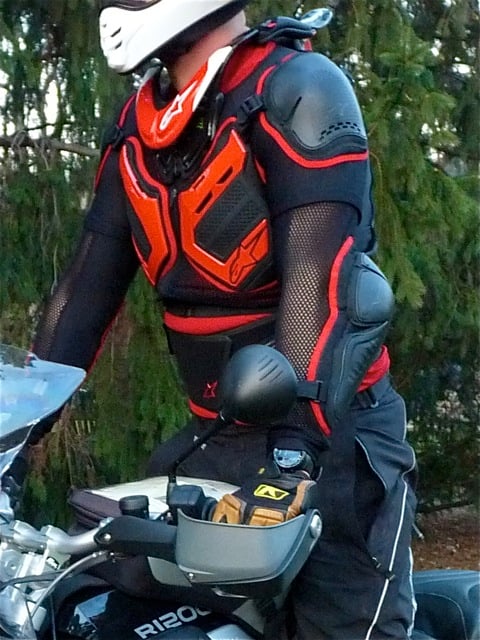 During those off-bike moments when I'm in full motorcycle gear, be it walking through a grocery story or filling up my bike at a gas station, 2 questions are directed at me with remarkable consistency:
During those off-bike moments when I'm in full motorcycle gear, be it walking through a grocery story or filling up my bike at a gas station, 2 questions are directed at me with remarkable consistency:
"What the heck is that?" Almost immediately, I know the passerby is wondering what the framework is wrapped around my neck and sitting atop my shoulders. While it seems almost impossible to me that anyone in the world wouldn't know what this is by now, I remind myself that not everyone lives in the motorcycle world as I do, and might not know. So I typically reply "it's a neck brace to prevent neck injury in the event of a crash," and then go on to give them a visual of extreme neck movement and how it would stop my helmet (and neck) from being forced into a dangerous, or even catastrophic position.
The other question is always: "Does it work?"
Still not sure of a good way to answer this, I typically respond "Well...I sure hope I never have to find out. But it does make sense to me."
Folks, with literally an infinite number of possible scenarios, crashes, forces, angles, speeds, and measures of velocity inherent in any motorcycle crash, it's really impossible for us to say with any degree of accuracy if a neck brace "would or would not" have made a difference in any specific crash scenario. However, I think it's safe to say that there are plenty of reasons to believe something like this would help, or at least reduce the chances of catastrophic injury. Is a neck brace definitely going to make the difference though? My answer is: A few $hundred$ certainly isn't worth finding out the hard way.
 Take a look at the diagrams below as taken from the Alpinestars Bionic Neck Support Owner's Manual. This is only a snippet of the information they share in the manual, but it's an indication of the amount of research and development that went into making their BNS system. Ever heard of the "HANS Device," the mandatory safety feature used in many professional car racing circuits? Although motorcycle riding requires far more head mobility and range of motion than auto racing, it's easy to see the connection between these and motorcycle neck braces and how they could work to prevent injury.
Take a look at the diagrams below as taken from the Alpinestars Bionic Neck Support Owner's Manual. This is only a snippet of the information they share in the manual, but it's an indication of the amount of research and development that went into making their BNS system. Ever heard of the "HANS Device," the mandatory safety feature used in many professional car racing circuits? Although motorcycle riding requires far more head mobility and range of motion than auto racing, it's easy to see the connection between these and motorcycle neck braces and how they could work to prevent injury.
The Alpinestars BNS manual goes on to explain in considerable detail the testing process, reasoning, and design that goes into their Bionic Neck Support. See in the picture to the above/right here exactly how the bottom of my helmet would make contact with the BNS in 'extreme' situations and prevent injury. At the same time, I'm easily able to turn my head in either direction when I'm riding, constantly scanning my surroundings as needed. (This picture was taken on a "Patagonia Experience" motorcycle trip in 2013.)
So a few of my justifications for wearing a neck brace are simple:
- It takes literally a few seconds to put a neck brace on, and I'm putting on a helmet anyway, so hardly any extra time or effort is needed
- I don't find the neck brace restrictive, heavy, or uncomfortable in any way - if anything, it helps me feel more confident that I've done everything possible to stay safe (and confidence leads to better motorcycle riding, right?!?)
- The cost of a neck brace like the Alpinestars Bionic is practically nothing compared to hospital bills (or worse)
With all that in mind, what if a neck brace did make the difference someday in your motorcycle safety needs? Again, I'm not planning on finding out personally if they work or not, as I've had my motorcycle crashes and surgery, and find all of these endeavors are something I don't want more of. As I continue to ride the world though, I simply can't see a reason not to wear one.
(Excerpt from Alpinestars Bionic Neck Support manual below)




